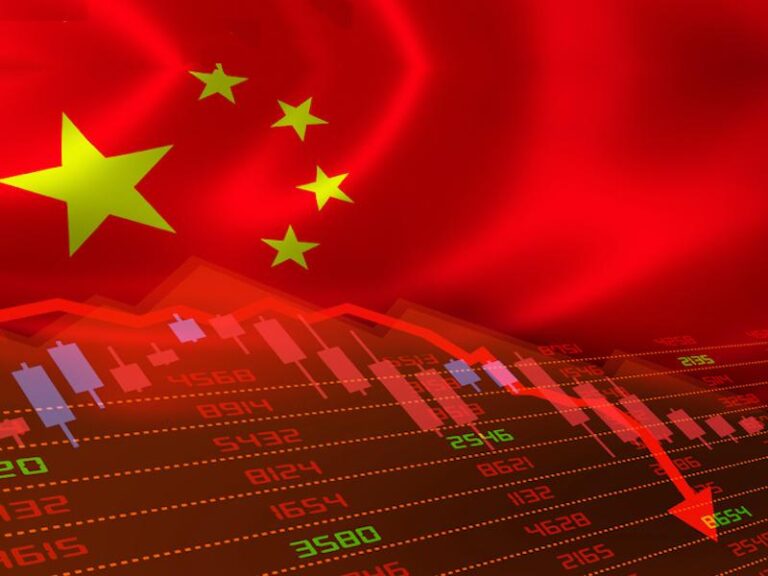As tensions between the United States and China continue to escalate, investors are increasingly reevaluating their exposure to the Chinese market. In a climate marked by trade disputes, regulatory crackdowns, and geopolitical uncertainty, many are seeking strategies to remove or reduce China-based assets from their portfolios. This article explores practical steps for investors looking to divest from Chinese holdings, examining the risks and opportunities involved as U.S.-China relations grow more strained.
Geopolitical Risks Prompt Shift Away From Chinese Assets
Increasing geopolitical tensions and escalating trade disputes between the U.S. and China have forced investors to reconsider their exposure in Chinese markets. Rising concerns over regulatory crackdowns, national security implications, and supply chain vulnerabilities have accelerated the flight from Chinese equities and bonds. Portfolio managers are now diversifying away from direct Chinese assets, seeking refuge in more politically stable regions to safeguard long-term growth and reduce volatility.
Key strategies for mitigating risk include:
- Reallocating capital to emerging markets: Countries in Southeast Asia and India are gaining prominence as alternatives.
- Increasing holdings in domestic-facing companies: Businesses less exposed to global trade frictions are favored.
- Utilizing sector rotation: Moving into technology and consumer sectors less reliant on China-driven supply chains.
| Risk Factor | Impact on Portfolio | Mitigation Approach |
|---|---|---|
| Regulatory Uncertainty | Sudden asset devaluation | Reduce direct equity exposure |
| Trade Tariffs | Profit margin compression | Diversify supply chain dependencies |
| Political Instability | Increased volatility | Shift to developed market funds |
Sector Analysis Reveals Vulnerable Exposure to Chinese Markets
Recent data highlights a critical vulnerability within several key sectors that maintain significant ties to Chinese markets. Industries such as technology, consumer electronics, and manufacturing exhibit substantial revenue streams linked to China, placing portfolios at increased risk amid escalating geopolitical tensions. Notably, companies reliant on Chinese supply chains or import-export relationships face imminent challenges that could trigger volatility and diminished investor confidence. This dependency calls for urgent reassessment of exposure to safeguard assets against continued uncertainty.
Investors seeking to mitigate these risks should focus on diversification strategies that pivot away from China-centric assets. Emphasizing sectors with limited or no Chinese market involvement reduces susceptibility to systemic shocks. The table below summarizes vulnerable sectors alongside alternative areas demonstrating resilience and growth potential outside of Chinese influence:
- Renewable Energy: Boosted by domestic policies and innovation.
- Healthcare & Biotech: Driven by aging populations and independent R&D.
- Domestic Consumer Goods: Focused on U.S. demand and supply chains.
- Financial Services: Concentrated on North American markets and regulations.
| Sector | Chinese Market Exposure | Recommended Alternative |
|---|---|---|
| Technology | High | Renewable Energy |
| Consumer Electronics | Very High | Healthcare & Biotech |
| Manufacturing | Moderate | Domestic Consumer Goods |
| Financial Services | Low | Remain Focused Locally |
Practical Strategies for Divesting China Holdings and Reallocating Capital
Investors aiming to reduce exposure to Chinese assets should start with a comprehensive portfolio review to identify direct and indirect holdings. This involves not only divesting from equities listed on Chinese exchanges but also scrutinizing multinational firms heavily dependent on Chinese supply chains or revenues. A phased approach can help mitigate sudden market shocks, allowing for strategic sales based on liquidity and valuation metrics. Emphasizing ETFs with broad geographic diversification and low China weightings can serve as an efficient vehicle for repositioning while maintaining exposure to global growth.
When reallocating capital, consider allocating toward sectors and regions poised to benefit from shifting geopolitical dynamics and supply chain realignments. Emerging markets in Southeast Asia, domestic-focused U.S. industries, and renewable energy sectors offer compelling alternatives. Key strategies include:
- Targeting U.S. mid-cap companies with minimal international revenue dependence
- Increasing stakes in technology firms specializing in semiconductor manufacturing outside China
- Diversifying into infrastructure and defense sectors aligned with national security trends
| Divestment Step | Recommended Action | ||||||||
|---|---|---|---|---|---|---|---|---|---|
| Identify Exposure | Analyze portfolio for China-related assets | ||||||||
| Phase Out Sales | Sell over time to avoid market impact | ||||||||
| Reallocation Targets | Focus on U.S. tech, domestic firms, emerging Asia | ||||||||
| Use Diversified Funds |
| Divestment Step | Recommended Action |
|---|---|
| Identify Exposure | Analyze portfolio for China-related assets |
| Phase Out Sales | Sell over time to avoid market impact |
| Reallocation Targets | Focus on U.S. tech, domestic firms, emerging Asia |
Use Diversified
Key TakeawaysAs tensions between the U.S. and China continue to add uncertainty to global markets, investors are increasingly reevaluating their exposure to Chinese assets. While divesting from China presents challenges-from navigating complex regulatory environments to managing portfolio diversification-it also offers a way to mitigate geopolitical risks in an evolving investment landscape. Staying informed and consulting with financial advisors will be crucial for those seeking to realign their portfolios amid shifting international relations.
| /
/
/
/
/




